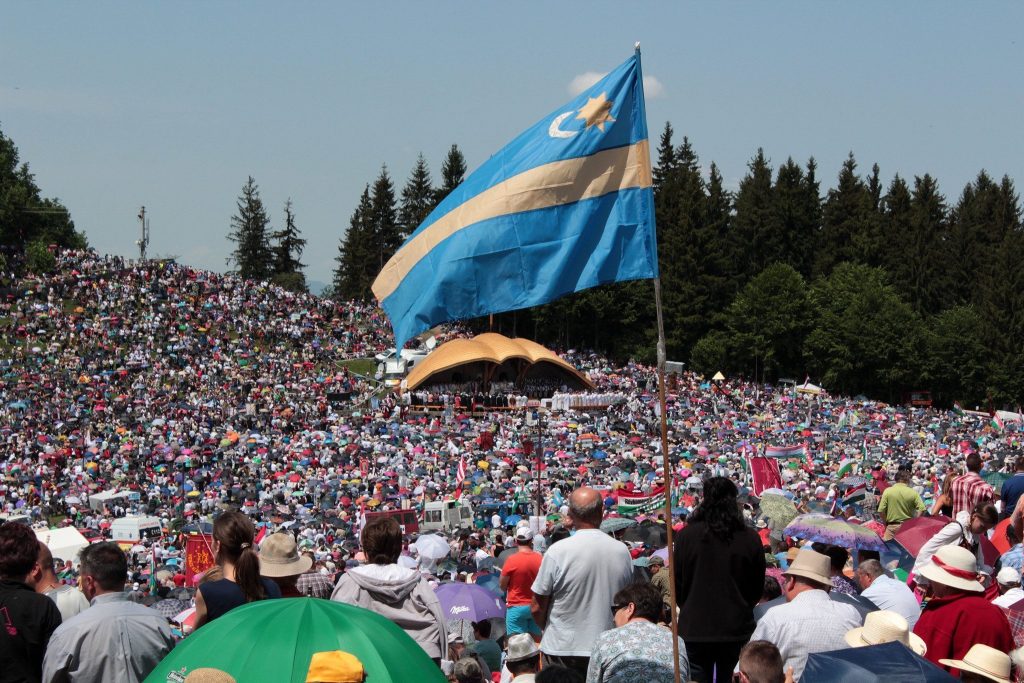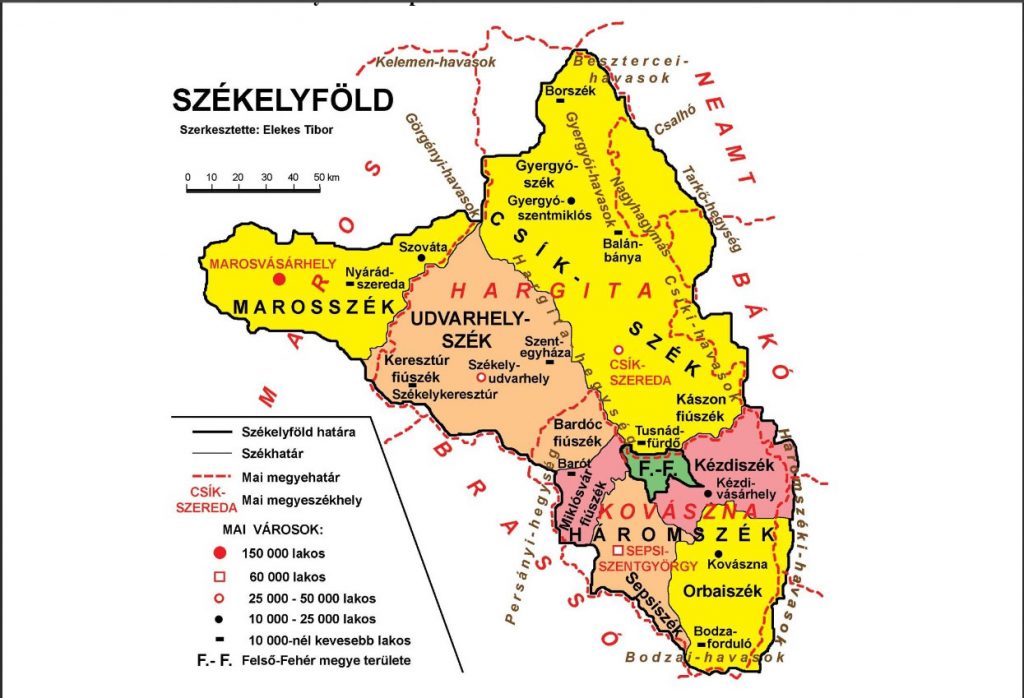Yes. With capital letters. The most expensive flag in Transylvania, the Szekler flag can cost you some 20.000 euros if you fly it from a public building.
Especially for Hungarians living in Szeklerland, the flag is the ultimate expression of their identity, their belonging together, their history and their struggle for self-determination — in other words: autonomy. Their wish to live their lives the way they choose, to decide for themselves about issues that most directly concern them. You can see the flag flying on many houses in Háromszék (Covasna county), Csíkszék, Udvarhelyszék, Gyergyószék (today’s Hargita county), and Marosszék (part of Mures county), the counties that form the region known as Szeklerland. No celebration takes place without this flag present, without it flying. It is just part of the Szekler people’s life.
On the occasion of the procession at the end of the pilgrimage to Csíksomlyó on the feast of Pentecost, the largest Catholic pilgrimage in the Carpathian basin, hundreds of thousands of people fly it, together with the Hungarian flag.
Even the American ambassador posed happily in a photo with it. When Romanian president Klaus Iohannis visited Szeklerland, he was offered one as a gift.
The light blue and gold flag with golden symbols is in fact not that old (it was designed in 2004), but the symbols that appear on the flag have figured in our myths and legends for over a thousand years. The sun and the moon, the principal elements of the flag can be seen on frescoes dating back to the 14th and 15th centuries. If you visit the oldest churches in Háromszék and Hargita county, you will see the most incredible wall paintings that include the Moon and the Sun as symbols. The Szeklers have a long warrior tradition, so the moon and the sun can be found on the medieval war flags with which they entered battle. These elements were used as a base for designing the Szekler flag, but the moon and the sun, as symbols of Transylvania, are also featured in the coat of arms of Transylvania and yes, Romania itself!

So, what is the problem? Why is it forbidden from use on public buildings, public squares and even in the offices of local authorities?
It is a constant and visible reminder. If someone drives or even walks through the most Szekler of Szekler villages, people are just people. They could be of any national or ethnic identity, and being in Romania, one could even pretend that they are Romanians. But once someone flies that flag, his (or her, or the community’s) identity becomes evident. It is also a reminder – or symbol, if you prefer – of all the legitimate individual and collective demands and grievances of these people that the state of Romania has so far failed to address in a satisfactory manner. In that sense, the flag may plague a bad conscience.
For some, it is unacceptable that the Szeklers want to have their regional identity, although in other areas of Romania regional flags are proudly presented on the facades of public buildings. More then 50 mayors of towns and villages in Szeklerland were subject of lawsuits because they used the flag on public buildings, parks or in public squares.

So, why is it even forbidden? Who forbids it? Clearly not the Constitution of Romania because the Constitution guarantees the right to identity for all citizens!
So, which law forbids it? There is no such law.
Then why do mayors have to pay a fine for flying the flag? Because Romanian courts ordered the fine as well as the removal of the Szekler flag from the facade of public buildings and public places of towns and villages across the Szeklerland.
Well, this is where the story starts to become really interesting. There is a journalist – who does not even live in Romania – bothered constantly by the symbols used by the Hungarian community. He is the one who files the lawsuits and – miraculously – he always wins. In this case, Romanian courts are demonstrably applying double standards: while Romanian regional symbols of Țara Bârsei, Crișana, Dobrogea or Bucovina are used all the time by the authorities, the Mayors of Szeklerland are fined for the same actions.
So, if you see this flag on private houses, in the windows of apartments, or even on public buildings in other countries such as Hungary, you know that it is an expression of solidarity with the struggle of the Szekler mayors and people to have their regional identity recognized by the Romanian state.
Related: The History of Székelyföld: It’s complicated
Title image: Szekler flag in a mock battle at Kurultáj, Europe’ largest traditionalist folk festival.